Today July 26th dawned sunny and clear. What a relief. We zodiacs into the town of Cape Dorset now known as Kinngait. We were met by a local guide who has lived here for all of her 52 years . Kinngait is a town of 1600 and is well known for its art, both prints and carvings. We started our tour at the cultural print building which is a large modern building built in 2017 and is a co-op that any local artist can belong to and use as long as they have lived in Kinngait for 6 months. Some locals first demonstrated some traditional toys and games as well as some throat singing before we toured the facility. A local artist demonstrated how each print is made by hand. 65 prints of each piece of art are made and the 50 that are the closest in colour etc are kept and sold and the others discarded. The mould is then no longer used. Now a days they are using slate for the moulds. The print he made was beautiful but would be thrown away as it was one that had already had 50 copies sold. We would have bought it in a heartbeat. We visited the community Center where some locals had some wares for sale as well but not the quality of the Print Shop. The town definitely showed more signs of prosperity than the last we visited as this has both a name for art and tourism giving residents opportunities for income.
In the afternoon we hiked in Milkjuak Park which is across the water from the town the ground here is very peatty and cushiony to walk on but it is this environment that supports carpets on low growing Arctic flowers which were stunning. The landscape was dotted with a variety of animal bones which have been left by hunters or other animals. At the top of the hill there were some archeological ruins of stone houses that were believed to be more than a thousand years old. What isolation and hardship that must have been! Down the other side of the hill we came upon an ocean inlet where some ancient kayak stands remained. Kayaks were invented by the Inuit and were there method of hunting on the ocean until the introduction of boats and they would put their kayaks up on these rock stands to protect them from the huge tides experienced up north. While contemplating the beauty we were treated to a visit by a beluga whale feeding in the inlet.
All and all a great day.
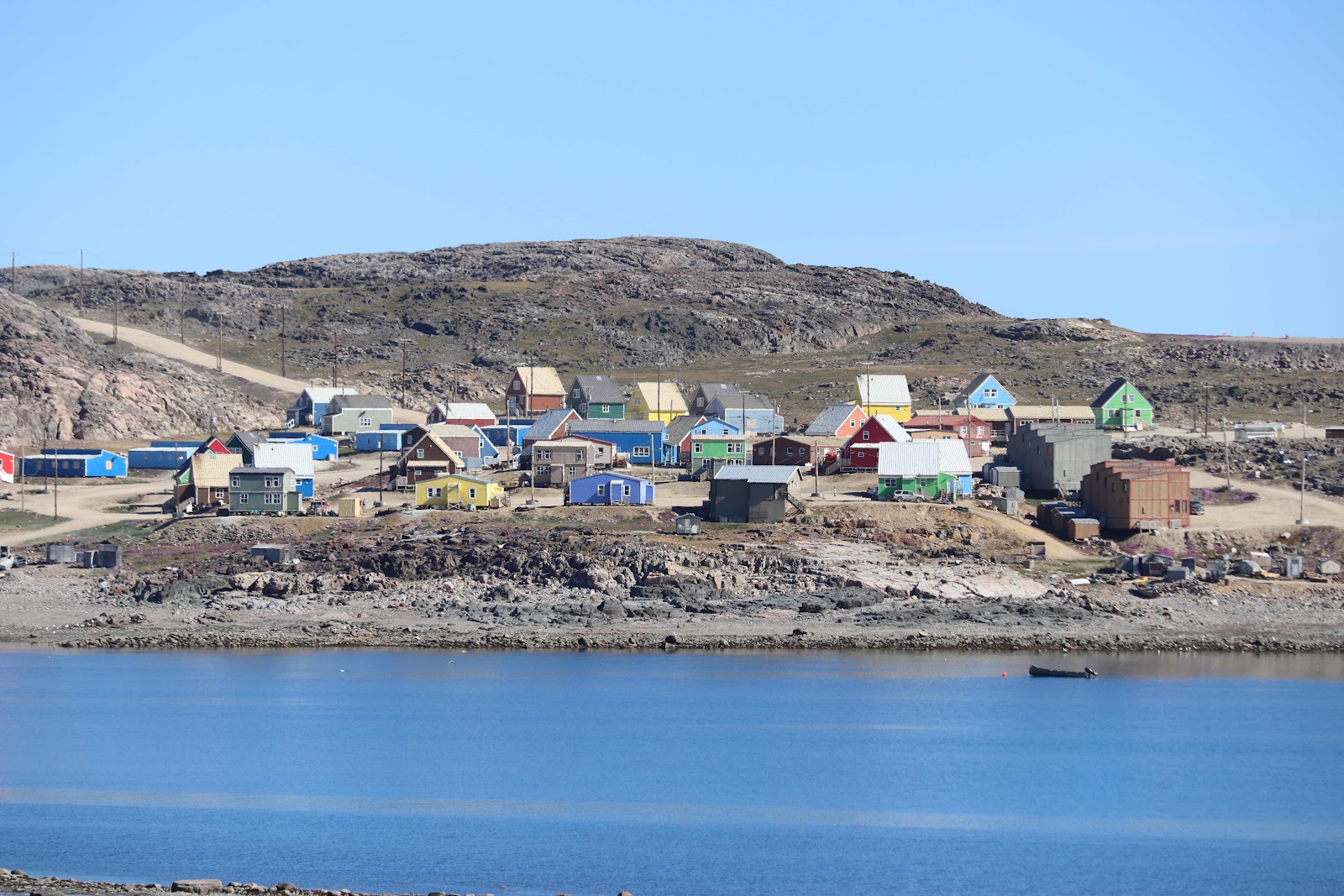
The colourful houses of Cape Dorset. Even from the water one could see that this is a more prosperous community.

The large blue building on the hill is the modern print co-op replacing the green and yellow one below it. It is used by many of the artists in the community
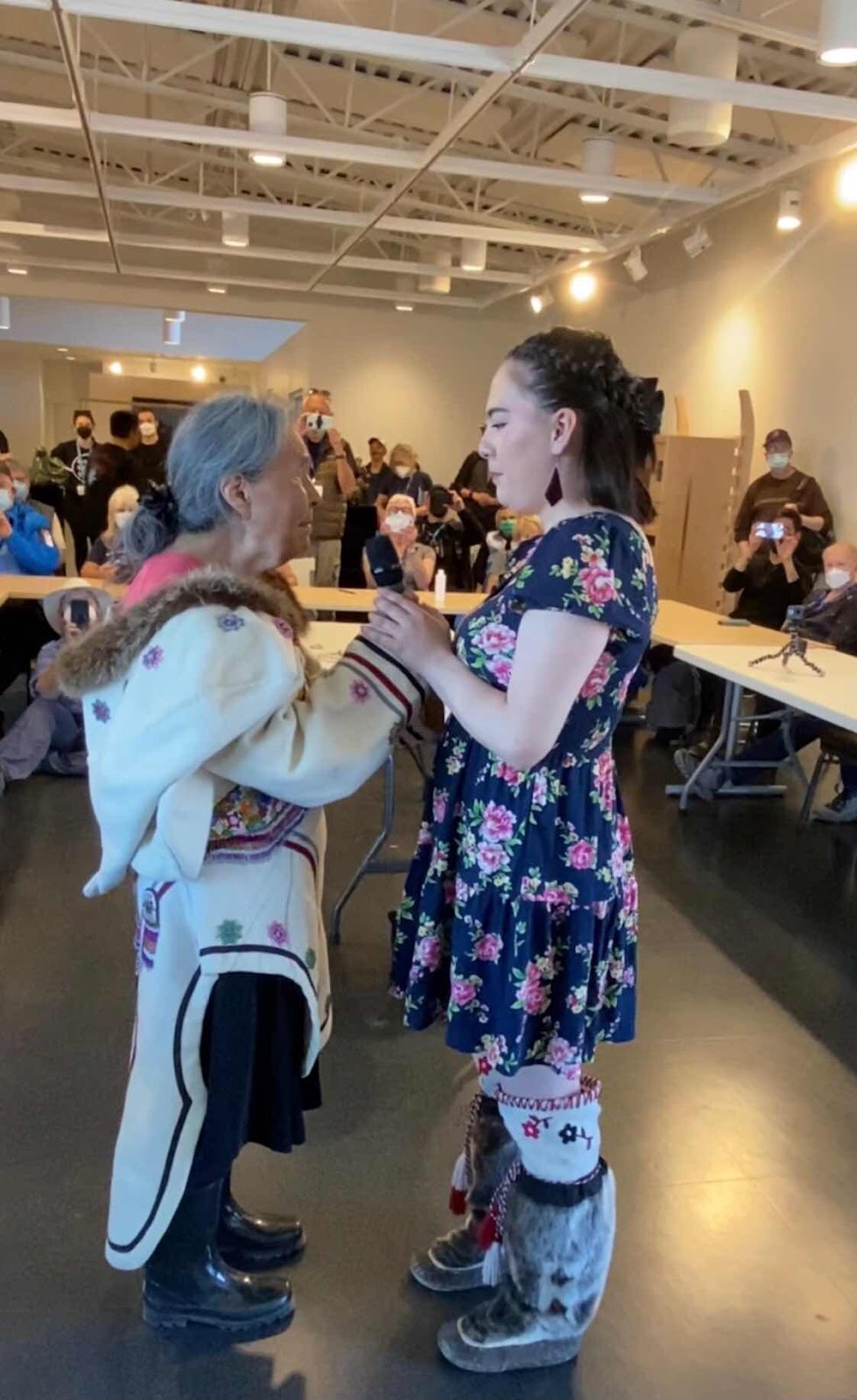
After an introduction to the toys and games of the traditional Inuit this elder and young girl gave us a demonstration of throat singing
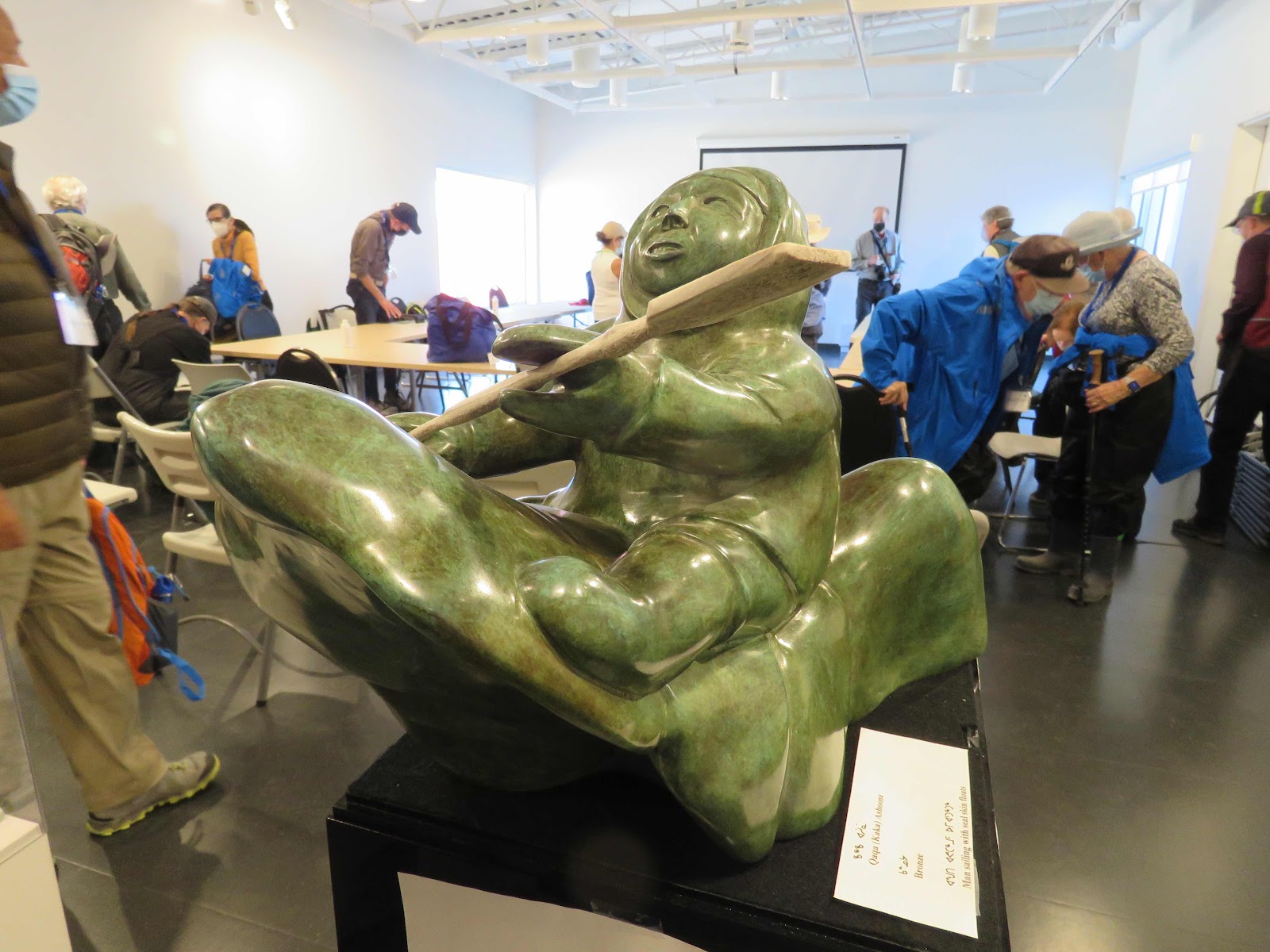
Beautiful carvings on display and for sale

This artist gave us a demonstration on the art of print making. Each print is made by hand

The finished print. Such a shame it would be thrown away

A carver working outside along the roadway sanding some of the pieces he was working on

Colourful community Center where other artists had some of there wares for sale. We were the first ship in three years but Cape Dorset art is sold around the world
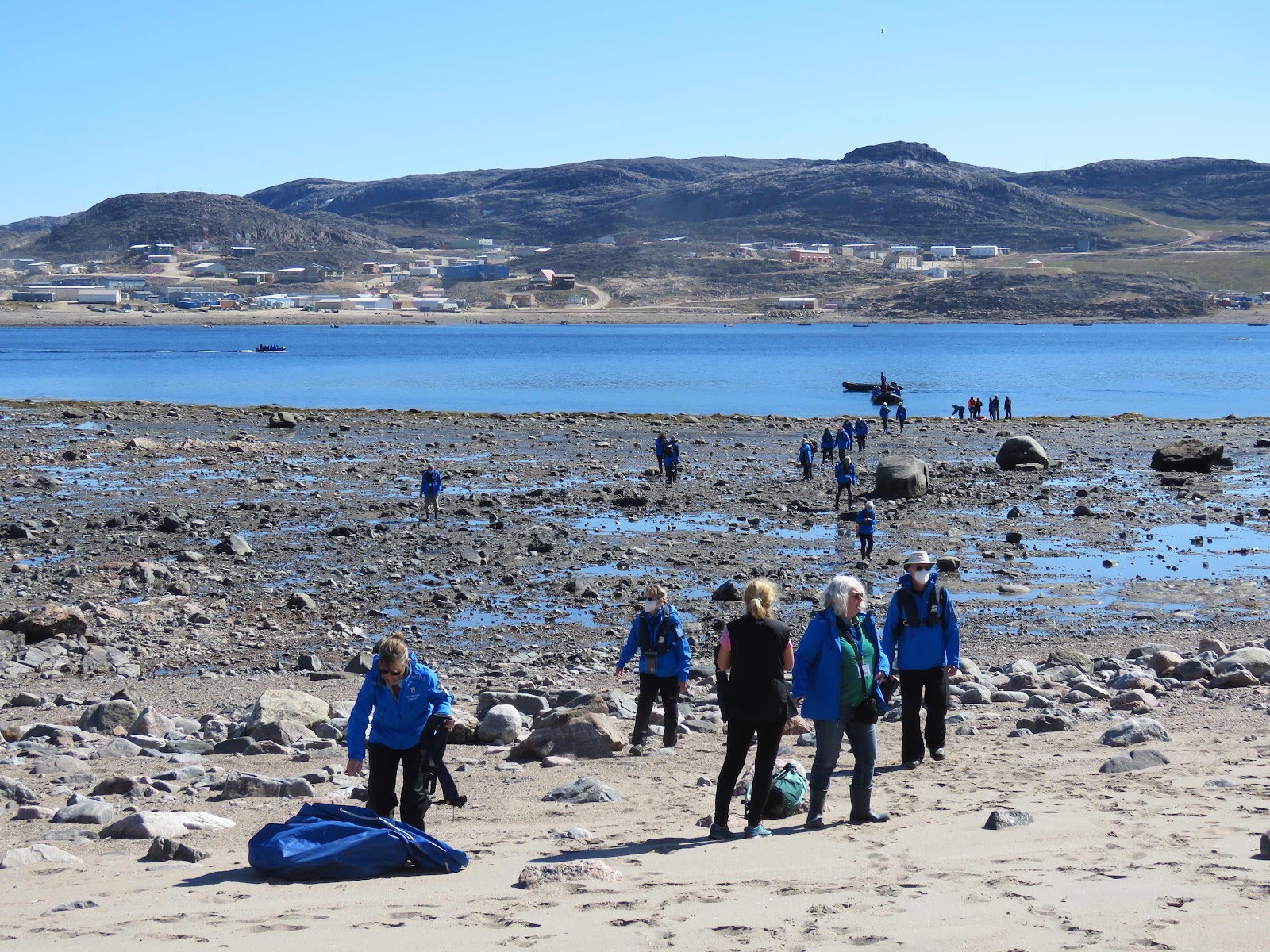
Making our way from the zodiacs up to the park. Tides here are huge and change significantly in an hour or two

The carpets of purple fireweed resemble small orchids and colourful lichen grow on the rocks

Cotton grass adds a lightness to the landscape. The cotton is gathered and used to start fires in the home.

The park is an archeological site and this is the remains of an ancient house

Our guide at the park carried a gun in the event of polar bears and I have no doubt that she knew how to use it

Fields of flowers going to seed had a beauty of their own

This is a ancient kayak stand where the Inuits would put their kayaks up on after hunting and fishing to protect them from the tide and from animals
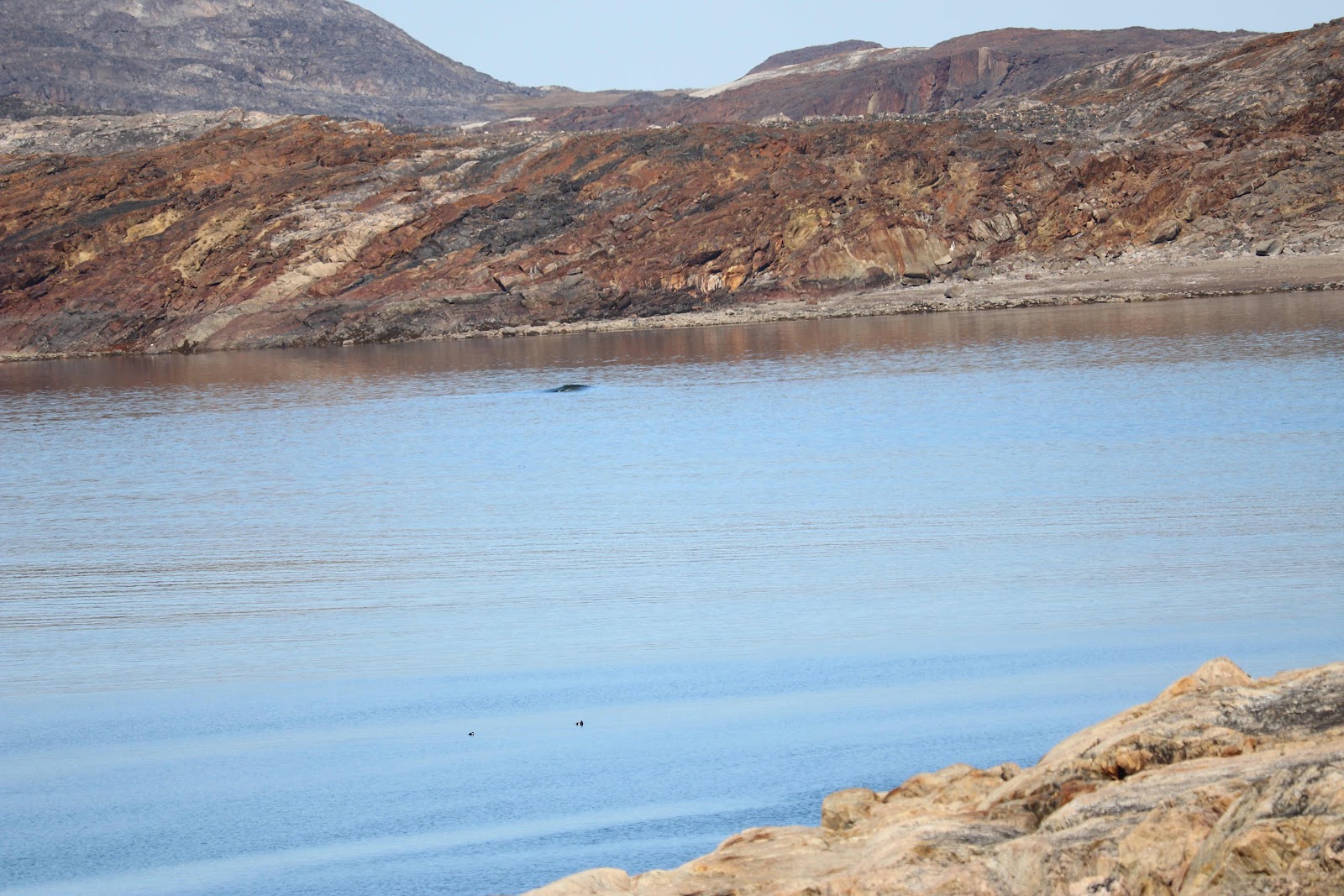
We were lucky to spot a beluga feeding in the inlet. There had been a whole pod of them there in the days before we arrived and the community had had a very successful hunt but apparently they took great care to clean up the beach before we arrived so as not to offend anyone. It is their way of life.

This walrus head has been anchored in the sea for the creatures to take care of the cleaning so that the carver can make use of the tusks. This walrus was found dead on the beach.

The colourful lichen make a lovely contrast to the flowers and grasses.